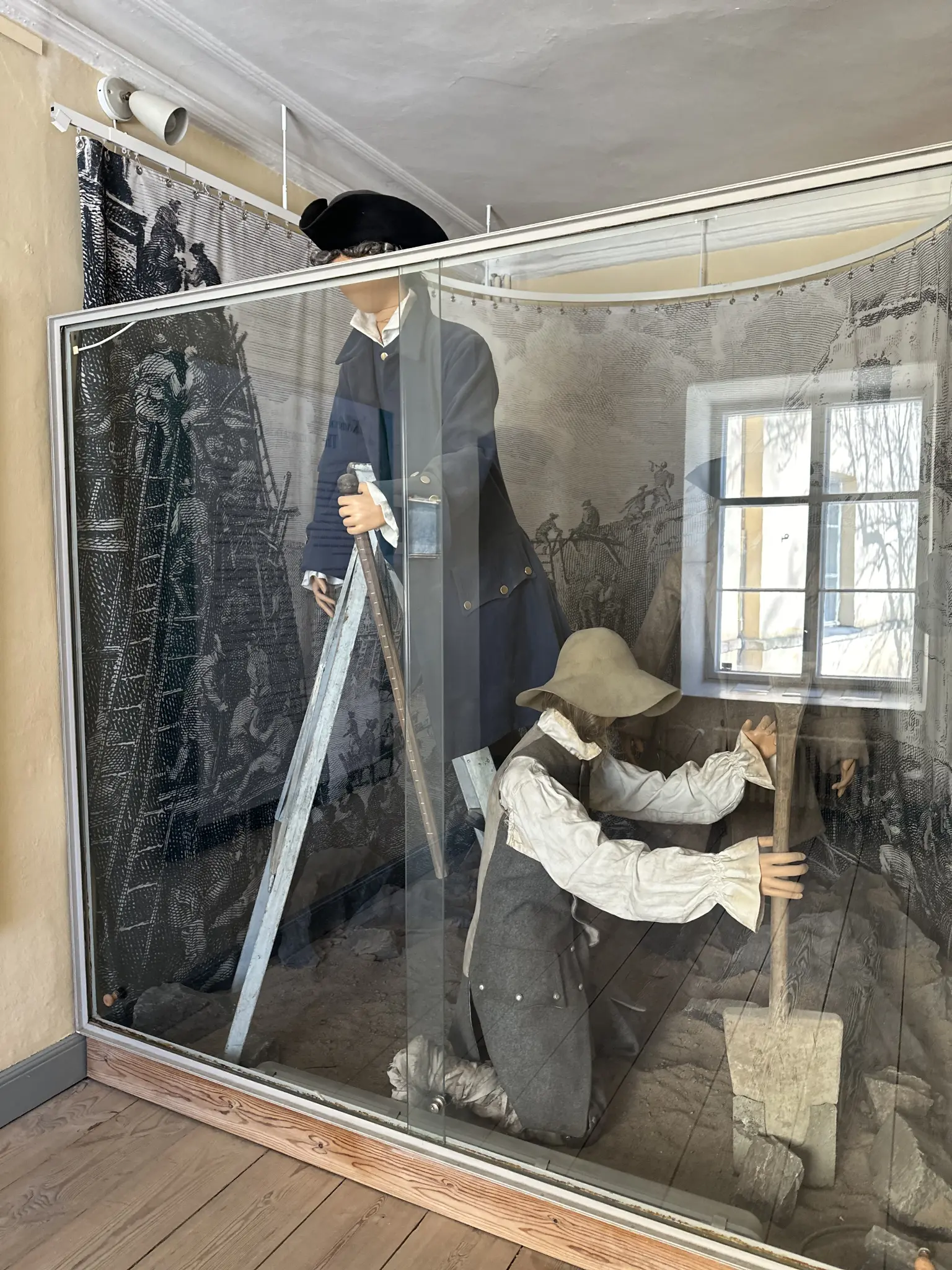
Room 10. The builders of Sveaborg


Room 10. The builders of Sveaborg
Construction of the fortress was carried out both on the Wolf's Lairs and on the city side on the cliffs of Ullanlinna. Thousands of soldiers and large numbers of craftsmen and artisans were employed. Prisoners were also used. In the early years, housing, barracks, forts, warehouses and sheds were built and tools were made. All over southern Finland, old brick pits, lime kilns and kilns were employed and new ones built. A windmill designed by master builder Daniel Thunberg was built on the island of Susisaari, a power source capable of simultaneously grinding grain, sawing boards and pumping water. "Even if all the master builders in the kingdom were fused together, you wouldn't get half of Thunberg," said Ehrensvärd.
as the bastions of the fortress began to rise, cannons were transported across the ice to the islands. When the dockyard was completed, ships were built for the army fleet. The work was done only in the summer and at its peak the workforce numbered nearly 7000 men. The working days were long, 12.5 hours with all the overtime and contract work. Food and accommodation were modest.
ehrensvärd himself went around the site in working clothes. According to Admiral Tersmeden's memoirs, he once appeared at the dinner table of the General's lady in command in the city with his officers, regardless of the ceremonies.with his hair untidy, dressed in simple casual clothes and woollen socks, his boot-stocks in a bundle, his hat-straps loose, without cuffs, holding a long octagonal stick with his inches and elbows marked on it. The regimental officers present looked like gentlemen next to Ehrensvärd and his men. They were like bricklayers' knights, one grey, one green, one blue, but they all took to the table with a cheerful and jovial air.
